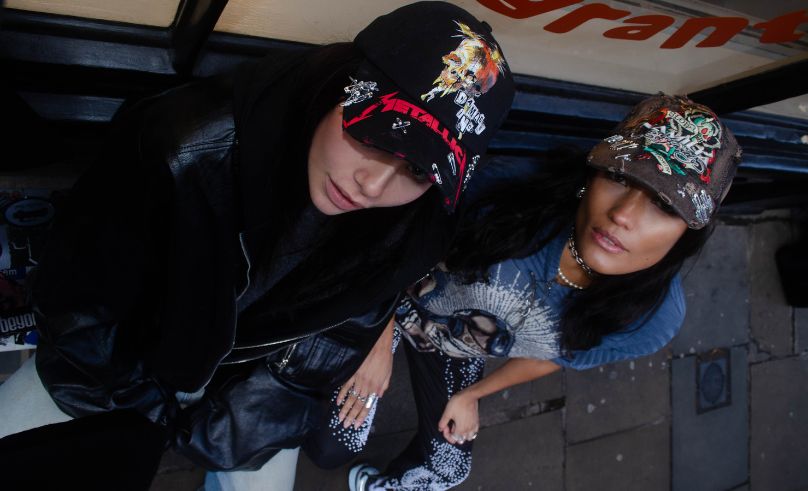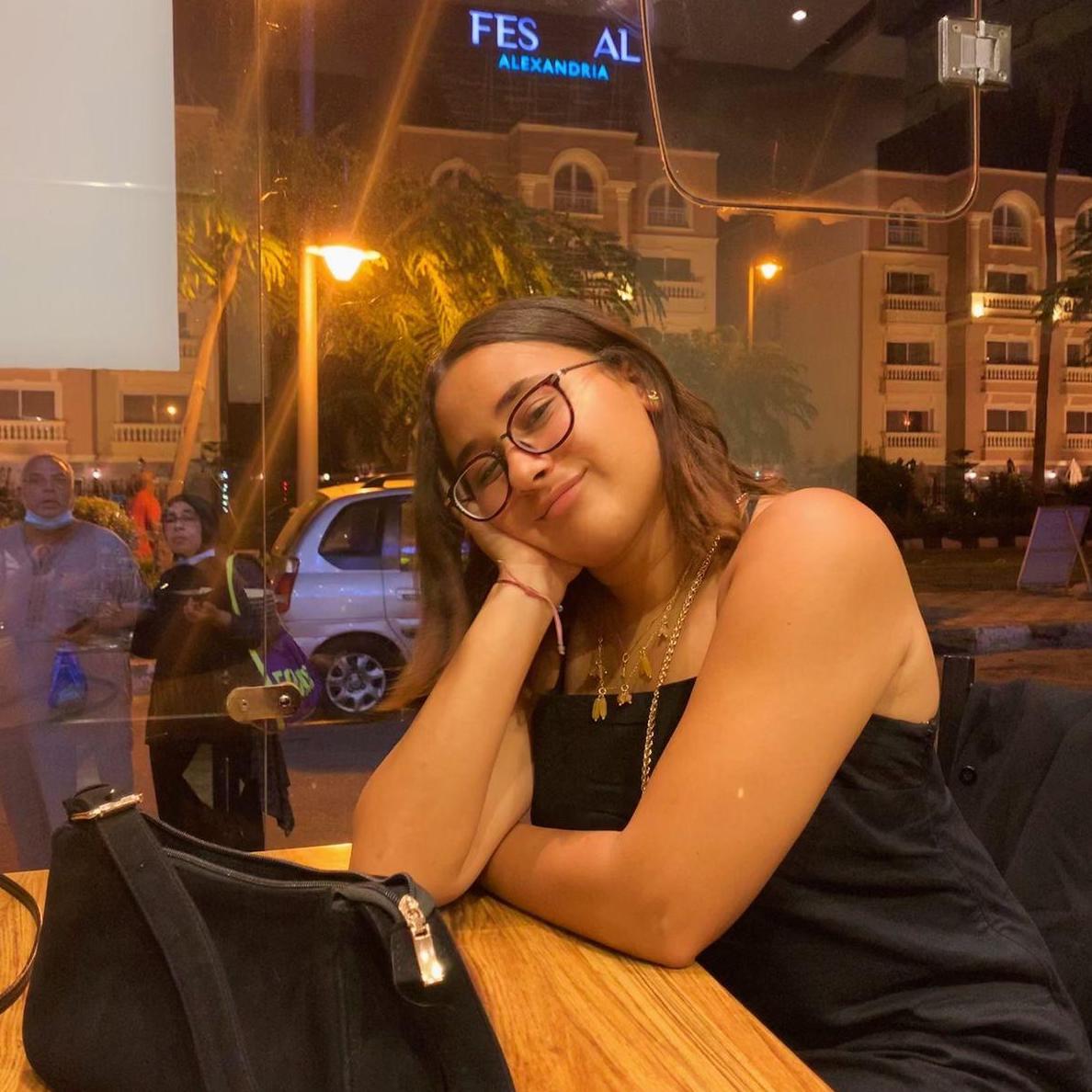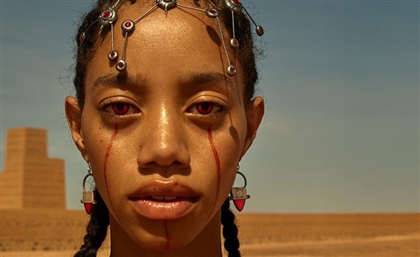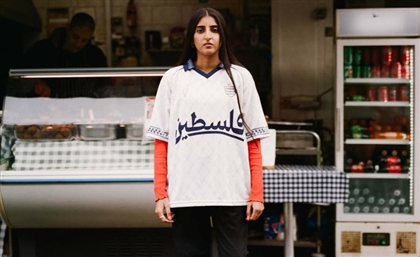Egypt’s ‘Kultured Glass’ Asks You to Wear Your Heart on Your Head
To the London-based Egyptian designer of Stick a Pin in It, hat design is a sixth sense.

Egyptian designer Rawan ElSheikh, creator of London-based brand Stick a Pin in It, is a woman of many hats - both literal and figurative. After graduating with a degree in marketing management and psychology, she initially hesitated to pursue a creative career. Under the alias Kultured Glass - a name sparked by a scene she stumbled upon in an abandoned restaurant while exploring photography - she began building a portfolio that spanned campaign shoots, Fashion Week coverage in London and New York, styling gigs, video editing, and light assistance work. In her own words: “Basically anything I can do - or can learn to do.”
-8169dcc1-e4d2-4874-a87f-941b58731ee1.jpg) Somewhere between all those roles came the idea of making her own hats. “I wanted a cap that had character, but I couldn’t find anything that quite scratched that itch for me. So, I made it.” Over the course of our flickering Google Meet call, one thing became increasingly clear: ElSheikh wasn’t going to let anyone else define her character - or the character of the hats she wears.
Somewhere between all those roles came the idea of making her own hats. “I wanted a cap that had character, but I couldn’t find anything that quite scratched that itch for me. So, I made it.” Over the course of our flickering Google Meet call, one thing became increasingly clear: ElSheikh wasn’t going to let anyone else define her character - or the character of the hats she wears.
“Growing up,” she recalls, “my mum was very DIY with clothes. She’s an artist - a painter - and brought that creativity to mending everything that needed it. Without noticing, I did the same; I mended my own clothes and made alterations when I wanted to, like that time I stuck pins into a hoodie. So when I wanted that hat, I got a cap, ripped it up, and put pins in it.”-2602dbda-dced-432a-b36f-60170ceb4604.jpg) Her “toolbox” is more like a forager’s basket: a face razor, tweezers, pins (of course), pearls, and whatever small charms or strings she happens upon that might work on a hat. She sources unused or barely-used caps from Depop, selecting those with an existing flair, and works from the floor of her bedroom. The process is as personal as it is physical - tactile and meditative.
Her “toolbox” is more like a forager’s basket: a face razor, tweezers, pins (of course), pearls, and whatever small charms or strings she happens upon that might work on a hat. She sources unused or barely-used caps from Depop, selecting those with an existing flair, and works from the floor of her bedroom. The process is as personal as it is physical - tactile and meditative.
“I never begin working on a hat knowing what it’s going to end up looking like; it’s a very intuitive process that shifts and morphs until the hat is finished. I don’t even think about it, either; I just get into the flow and it just happens. It becomes something. One time, I started out making a hat and halfway through, I realised this hat was being made for a friend of mine. I don’t even know how it happened, but I showed it to them and it indeed was made for them.”
What captivates her most is the transformation from concept to tangible piece. “A really meaningful moment in the history of Stick a Pin in It is when I got to give an artist I love and look up to a hat I made. I thought, ‘It would be insane if he wore it, but it means everything already that he holds and owns something I made with my hands on the floor of my room.’”-8bb0e895-9a88-4eb8-932a-0e838d3383bd.jpg) Though ElSheikh insists her process “might seem relatively straightforward,” a glance at her portfolio suggests otherwise. There’s no pattern to the distressing, no fixed placement for pins, no strict colour schemes. Every hat has a name, a distinct personality - one that wears you as much as you wear it. “I felt this in my heart, but it wasn’t until I actually got this comment from customers and friends that I knew it was true. The hats have distinct energies. They make you feel a certain way; they speak before you do. One girl told me her hat makes her ‘feel like a bad b*tch.’”
Though ElSheikh insists her process “might seem relatively straightforward,” a glance at her portfolio suggests otherwise. There’s no pattern to the distressing, no fixed placement for pins, no strict colour schemes. Every hat has a name, a distinct personality - one that wears you as much as you wear it. “I felt this in my heart, but it wasn’t until I actually got this comment from customers and friends that I knew it was true. The hats have distinct energies. They make you feel a certain way; they speak before you do. One girl told me her hat makes her ‘feel like a bad b*tch.’”
That energy is part of the craft. “I don’t work on a cap if I’m not in a good mood. I put my energy into the making of each hat because I want the person to feel it. It’s a sacred thing made with love and care.”-57437132-8503-4b76-a9c5-a0946025d844.jpg) Given the intimacy of her process, Stick a Pin in It will always remain slow in production. The hats are as much wearable art as they are accessories - recognisable, individual, and deliberately unhurried. ElSheikh is even considering an exhibition. And while her pace is measured, the brand’s scope is widening: Stick a Pin in It will soon expand into clothing as well as accessories. After all, its very first piece was a hoodie.
Given the intimacy of her process, Stick a Pin in It will always remain slow in production. The hats are as much wearable art as they are accessories - recognisable, individual, and deliberately unhurried. ElSheikh is even considering an exhibition. And while her pace is measured, the brand’s scope is widening: Stick a Pin in It will soon expand into clothing as well as accessories. After all, its very first piece was a hoodie.
- Previous Article Monochrome Monday: The Apricot Edition
- Next Article Palestinian Designer Zeid Hijazi on Surviving as a 21st-Century Artist
Trending This Month
-
Nov 18, 2025
-
Nov 20, 2025
















